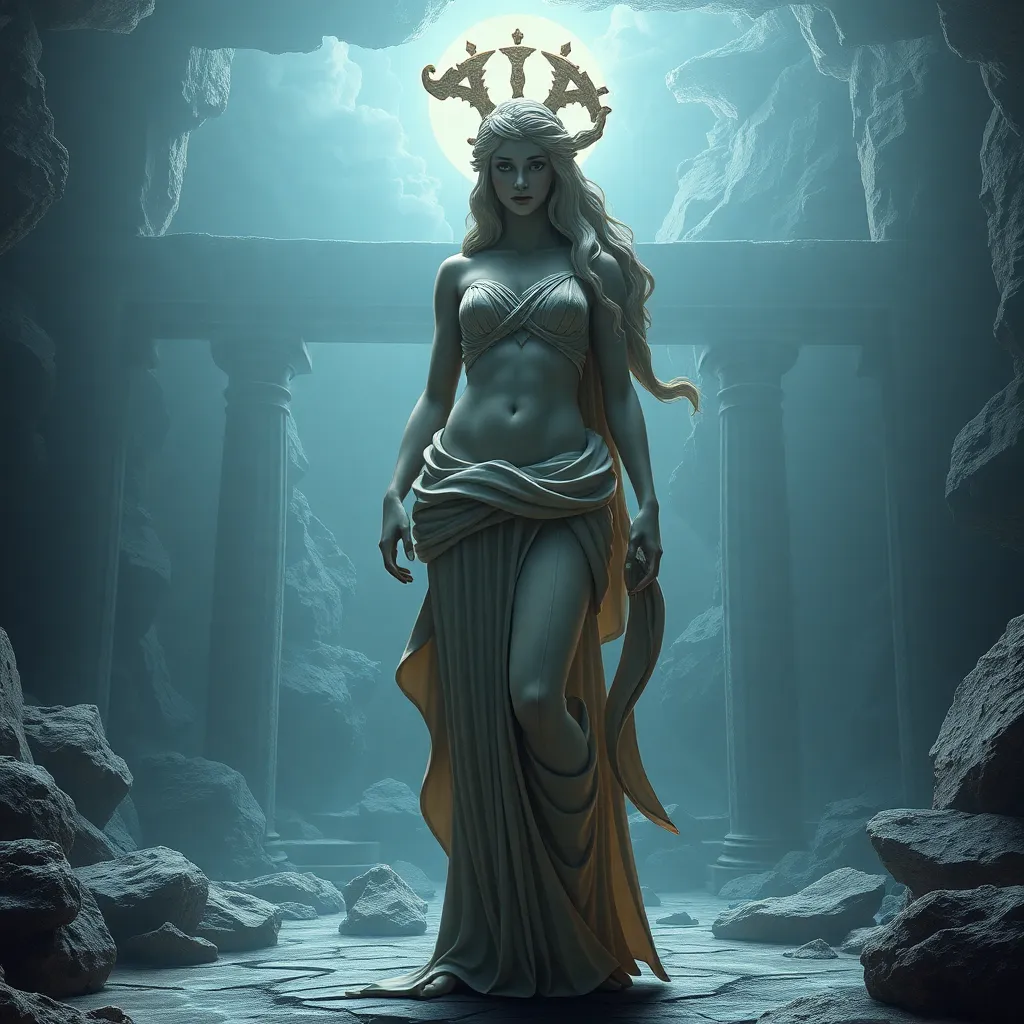The Underworld and Gender: Female Figures in Greek Mythology
I. Introduction
Greek mythology is a rich tapestry of stories and characters that have shaped Western literature and thought for centuries. It serves not only as a reflection of ancient Greek culture but also as a lens through which we can examine human nature, morality, and the divine. Among the many realms depicted in these myths, the Underworld stands out as a complex and multifaceted domain that plays a crucial role in the narrative of life, death, and rebirth.
The Underworld, often referred to as Hades, is portrayed as a shadowy realm where souls reside after death, governed by the god Hades. It is a place of both doom and transformation, housing various figures that embody different aspects of the human experience. This article aims to explore the significant female figures within the Underworld, examining their roles, symbolism, and the broader implications of their narratives in the context of gender dynamics in ancient Greece.
II. The Role of Women in Greek Mythology
To understand the female figures in the Underworld, it is essential to consider the historical context of gender roles in ancient Greece. Women were often relegated to secondary positions in society, confined to domestic spheres, and their representation in mythology mirrored these limitations.
- Historical Context: Women in ancient Greece were largely viewed through the lens of their relationships to men, whether as daughters, wives, or mothers.
- Representation: Female characters in mythology frequently fell into archetypes such as the nurturing mother, the seductive femme fatale, or the wise old woman, often sidelining their complexity.
- Importance: Despite these limitations, female figures often played critical roles in mythic narratives, influencing events and outcomes in significant ways.
III. Key Female Figures in the Underworld
A. Persephone: The Queen of the Underworld
Persephone, the daughter of Demeter, holds a unique and dual role in Greek mythology as both the goddess of spring and the ruler of the dead. Her story begins with her abduction by Hades, which serves as a pivotal myth that explains the changing seasons.
- Dual Role: Persephone embodies the cycle of life and death, representing the fertility of spring and the desolation of winter.
- Abduction Myth: Hades, captivated by Persephone’s beauty, takes her to the Underworld. This act of abduction is often interpreted as a metaphor for the transition from girlhood to womanhood and the loss of innocence.
B. Hecate: The Goddess of Magic and Witchcraft
Hecate is another powerful female figure associated with the Underworld. Known for her knowledge of magic and the supernatural, she embodies the mystery and power of the feminine.
- Connection to the Underworld: Hecate serves as a guide for souls transitioning between the realms of the living and the dead, often depicted holding torches to illuminate the darkness.
- Symbolism: Hecate represents female empowerment, wisdom, and the ability to navigate the complexities of life and death. Her association with magic reinforces the idea of women as powerful agents of change.
IV. Thematic Analysis of Female Figures in the Underworld
The narratives surrounding Persephone and Hecate reveal several critical themes related to death, rebirth, and the complexities of gender dynamics.
- Themes of Death and Rebirth: Persephone’s journey to the Underworld and her eventual return to the surface symbolize the cyclical nature of life and the potential for renewal.
- Gender Dynamics: The stories reflect the struggles and negotiations of power between male and female figures, with women often portrayed as both victims and powerful beings.
- Balance of Power: The interactions between these female figures and male counterparts illustrate a complex balance where female figures assert their agency against patriarchal constraints.
V. The Underworld as a Space of Empowerment
Contrary to the traditional view of the Underworld as a place of despair, it can be seen as a realm of agency and autonomy for female figures.
- Reinterpretation: Modern interpretations of Persephone and Hecate focus on their resilience and strength, challenging traditional narratives of victimhood.
- Agency: Both figures exemplify the ability of women to navigate and influence their fates, reshaping their identities within the constraints of their environments.
- Comparisons: By examining their portrayal alongside male figures, it becomes evident that female figures often possess unique strengths that challenge male dominance in their narratives.
VI. Cultural Impact of Female Figures in the Underworld
The narratives of Persephone and Hecate have left a lasting impact on literature, art, and popular culture, influencing representations of women throughout history.
- Influence on Literature: These figures have inspired countless works of literature, from classical texts to modern interpretations, highlighting their relevance across time.
- Modern Interpretations: Contemporary portrayals often emphasize themes of empowerment and resilience, resonating with feminist ideals.
- Continuing Relevance: The stories of Persephone and Hecate continue to evoke discussions about gender roles, power dynamics, and the complexities of female identity in today’s society.
VII. Conclusion
In summary, the exploration of female figures in the Underworld reveals significant insights into the complexities of gender representation in Greek mythology. Figures like Persephone and Hecate serve not only as symbols of death and transformation but also as embodiments of female power and agency.
These narratives encourage a reflection on the evolution of myths and their implications for understanding gender dynamics, suggesting that female representation in ancient texts can offer valuable insights into contemporary discussions about identity and power. As we continue to study these ancient stories, we uncover layers of meaning that resonate with ongoing societal challenges and the quest for equality.
VIII. References and Further Reading
- Hesiod, “Theogony” and “Works and Days”
- Homer, “The Iliad” and “The Odyssey”
- Robert Graves, “The Greek Myths”
- Joseph Campbell, “The Hero with a Thousand Faces”
- Patricia McCarthy, “Women in Greek Myth”
- Academic journals on gender studies and mythology




